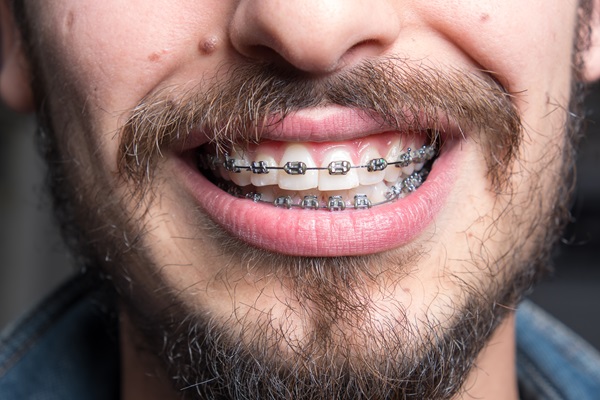How an Orthodontist Can Straighten Crooked Teeth

If you have misaligned teeth, it is never too late to visit an orthodontist for treatment. Today, there are many options available beyond basic metal braces. For example, clear and tooth-colored braces are becoming more popular. Read on to learn how a few popular orthodontic treatments work.
How braces work
Besides the traditional metal braces, a patient can also get ceramic braces. These are closer to the natural tooth color. Each bracket is attached to the center of a tooth. An orthodontist will place wires in each bracket. During placement, an orthodontist will use dental bonding material to attach each bracket to the tooth. Sometimes, the orthodontist will use ultraviolet light to cure, or set, the dental cement.
Generally, braces are extremely successful. The age of a patient is one of the factors that will determine the success rate of the braces. Following the orthodontist’s instructions can help braces be more successful as well. For example, many orthodontists will have patients wear rubber bands or other orthodontic appliances. This can facilitate treatment.
Many people think that teeth are connected directly to the jawbone. It can be difficult to imagine how teeth can be moved. However, the teeth are connected to the jaw by a membrane under the gums. The pressure that braces place on the teeth affects the membrane and changes the position of the teeth.
Parts of braces
First, an orthodontist will place the brackets on the teeth. Brackets are made out of plastic, ceramic or stainless steel. Each tooth has one bracket because it will allow more even pressure on each tooth. The orthodontist will place archwires on the teeth to connect the brackets. The orthodontist will use these wires to place pressure on the teeth. Usually, these are made from stainless steel or titanium.
The orthodontist will then place elastic bands, or O-rings, on each bracket. This can place more pressure on each tooth and the jaw. Sometimes, patients will have the option of choosing O-rings in different colors. For additional pressure for specific teeth, an orthodontist may use rubber bands. These usually connect an upper and lower tooth.
How clear aligners work
Another popular treatment option is clear aligners. An orthodontist will make a set of aligners, each of which will move the teeth a small amount. The first time a patient wears one of the aligners, it will place pressure on the teeth. As the teeth move, the pressure from that aligner will lessen.
Then the patient will move on to another aligner. Usually, a patient will wear an aligner for two weeks. Each aligner must be worn about 20 hours a day. This can help to speed up treatment.
Visit an orthodontist today
It is a good idea to know about the tools and methods that an orthodontist uses to straighten crooked teeth. This can help you prepare for orthodontic treatment. Whether you choose braces, clear aligners or another treatment, there is an option for you out there.
Request an appointment here: https://trielleorthodontics.com or call Trielle Orthodontics at (908) 344-3388 for an appointment in our Union office.
Check out what others are saying about our dental services on Yelp: Orthodontist in Union, NJ.
Related Posts
An orthodontist spends their entire career helping people to feel confident with their smiles, so if you have searched for “orthodontist near me” and are faced with choices about whom to see, you should choose a professional who values your patronage and happiness.Orthodontists focus on how the teeth are aligned and the jaw's position and…
Many people think that their journey with teeth straightening ends when their braces are removed or they finish their clear aligner treatment but neglecting to wear orthodontic retainers often causes delays in their new, straight smile. Wearing your retainer is an easy step to ensure that you will have a straight smile for the rest…
While many orthodontists are highly skilled professionals, a board-certified orthodontist has undergone additional training and passed rigorous examinations to demonstrate expertise in the field. This certification ensures that the orthodontist is knowledgeable and committed to maintaining high standards of patient care. Choosing a board-certified orthodontist is often a great option for anyone considering orthodontic treatment,…
A smile makeover can transform the appearance of teeth, creating a more confident and attractive smile. This process involves a customized plan that corrects alignment issues, gaps, discoloration, and other cosmetic concerns. Each treatment fits individual needs and goals, ensuring the best possible results.A smile makeover is a plan to improve the overall look of…
